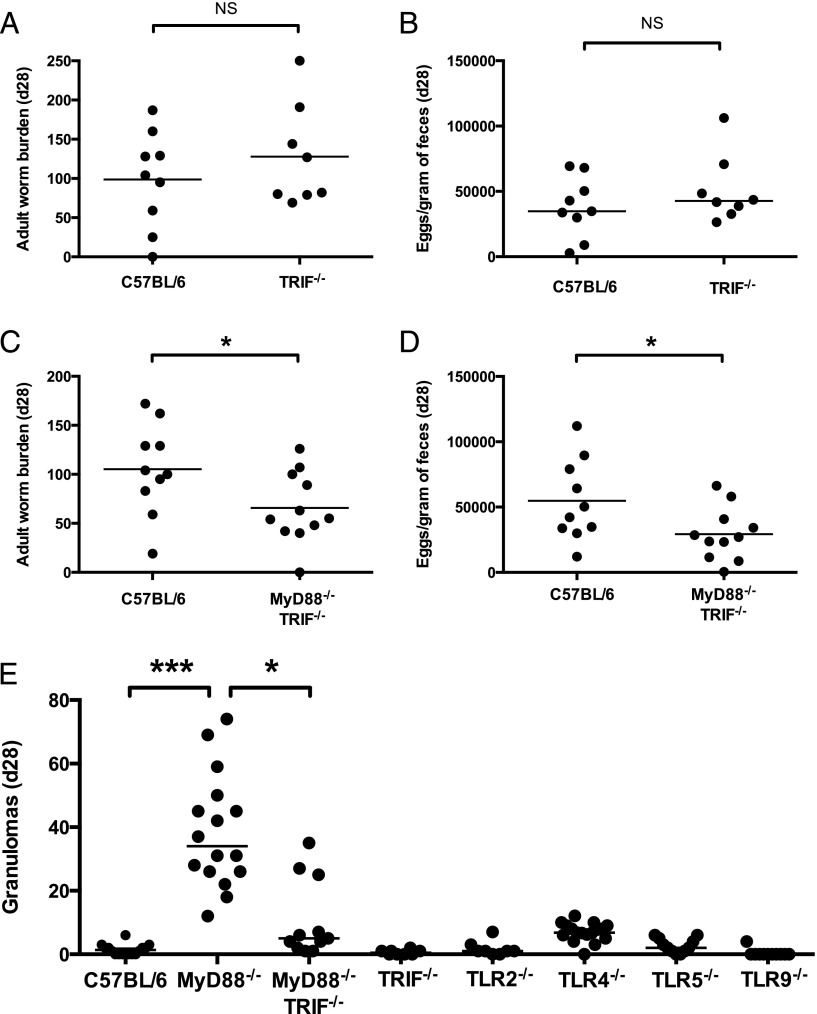FIGURE 5.
MyD88−/−, but not MyD88−/−TRIF−/−, mice display heightened granuloma formation in response to H. polygyrus infection. Mice of each genotype were infected with 200 H. polygyrus third stage larvae. (A) Adult H. polygyrus numbers recovered from the intestinal tract of C57BL/6 and TRIF−/− mice 28 d post infection. (B) H. polygyrus eggs per gram of feces from C57BL/6 and TRIF−/− mice taken 28 d post infection. (A and B) Data shown pooled from two independent experiments, each with three to five mice per group. (C) Adult H. polygyrus numbers recovered from the intestinal tract of C57BL/6 and MyD88−/−TRIF−/− mice 28 d post infection. (D) H. polygyrus eggs per gram of feces from C57BL/6 and MyD88−/−TRIF−/− mice taken at 28 d post infection. (C and D) Data shown pooled from three independent experiments, each with two to six mice per group. (E) Number of granulomas formed along the small intestinal tract in the indicated mouse genotypes 28 d following H. polygyrus infection. Data shown for each genotype are pooled from two or three independent experiments, and experiments for each genotype were performed separately. A statistical comparison is shown only between the C57BL/6, MyD88−/−, and MyD88−/−TRIF−/− groups. *p ≤ 0.05, ***p ≤ 0.001.

